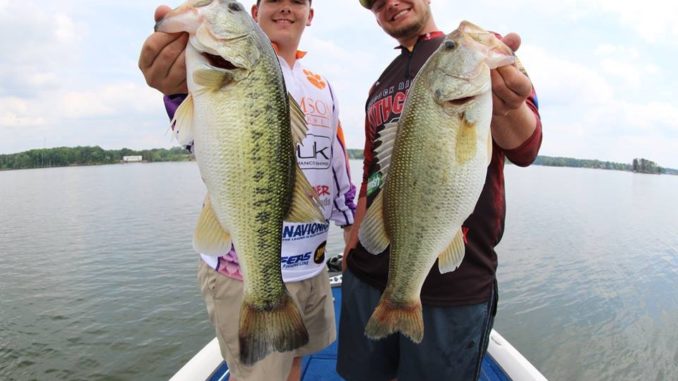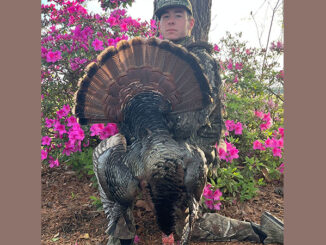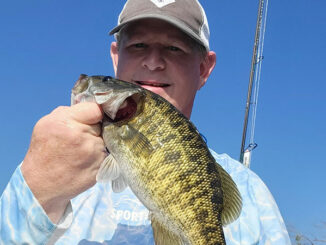
The right rod, line, technique will equal more fish
Crankbaits are great baits for largemouth bass, and the fall is a great time to use them. These lures don’t require any special techniques when reeling them in, they cover lots of water quickly, and crankbaits are available to cover any water depths. Sill, many anglers can help their chances with these lures by using a handful of tips.
Tip number 1: Use fluorocarbon line. Unlike braided line or monofilament, fluorocarbon line sinks, which helps in many ways with crankbaits. It may not seem like it can make much difference, but especially when using deep-diving crankbaits, it can help get the lure down more quickly, and can help keep it down. It also helps keep the line from tangling on the lure like braids and mono can when pausing during the retrieve.
Tip number 2: Use a longer rod. Most anglers that use crankbaits often won’t settle for anything less than a 7 1/2-foot rod, and an 8-footer is even better. The biggest reason for this is casting distance. A longer rod helps get that lure out there farther, and especially with deep-diving crankbaits, this is important to ensure the lure reaches its maximum depth on the retrieve. You’ve got to have enough distance between you and where the lure lands to allow it enough time to dive that deep.
Tip number 3: Use a rod with the right power and speed rating. All rods, even those of similar length, aren’t created equal. A rod with a medium-heavy power, and a medium tip is ideal for crankbaits. This combination aids in two ways — casting distance and hook-setting ability.
The medium-heavy power rating means the rod has a good merger of stiffness and flexibility, allowing anglers casting power for distance, with enough finesse mixed in to make accurate casts. The medium tip means the rod tip bends at about the midway point of the blank. This amount of flex is good for crankbaits because the treble hooks need some “give” to avoid being yanked out of the thin lips of bass on the retrieve.
Looking at the base of the rod where it meets the handle, anglers can identify the perfect rod for crankbaits. In what often appears to be indecipherable script, it will say “7’6” MH, M.” The numbers represent the length of the rod, MH stands for medium-heavy, and signifies the power rating, and M stands for medium, which is the speed of the rod’s tip.
Tip number 4: During the retrieve, keep your rod tip pointing toward the water at a 45-degree angle. Holding the rod parallel to the water feels natural, but it leaves you in a jam when you get a bite and it’s time to set the hook. Keeping the rod pointed low allows you to pull up and set the hook with as much leverage as possible
Tip number 5: Set the hook properly. With crankbaits, the hooks are exposed, and plentiful. When you feel a bass on your crankbait, don’t rear back and set the hook the same way you set it when using a Carolina-rig or a hollow-body frog, lures with hooks that need a good stiff jerk to bury the hooks home. When you feel a bite on a crankbait, smoothly raise the rod tip. This is when that medium-fast rod flexes in just the right place to keep the fish hooked without ripping the hooks from its mouth.
Anglers can certainly catch bass on crankbaits without using all these tips, but using them will make their crankbait trips more productive and more enjoyable.
-Read more crankbait fishing tips here.




